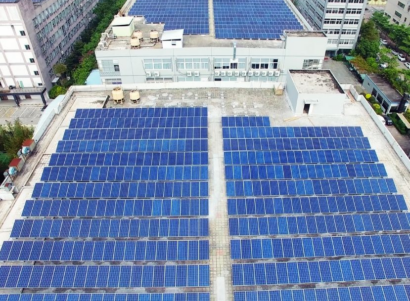Associate Researcher | Environmental Health Sciences, School of Public Health, UC Berkeley
Affiliate | Energy Technologies Area, Lawrence Berkeley National Lab
Unlocking the Potential of the Data Revolution
This year, PSE Healthy Energy launched the Methane + Health Initiative to expand scientific and public understanding on the link between methane emissions, air pollution, and public health. With global temperatures on the rise, this research is critical to turning new methane data into actionable solutions that protect both people and the planet. To understand why, we delve into the advancements in methane science this year, the current state of emissions, and how our research is driving solutions to this critical challenge.
Methane Emissions are Rising Fast
Methane is a strong greenhouse pollutant, 86-times the strength of CO2 over the 20-year time horizon, and the control of methane is one of the best ways to limit warming in the near-term. The concentration of methane in the atmosphere hit the highest levels in at least 800,000 years in 2024, according to the Global Carbon Project. If methane emissions continue their rapid rise, the world will almost certainly warm well beyond the two-degrees of warming, above which scientists warn that the impacts of climate change may become irreversible. The Global Methane Budget shows that in the last 20 years, methane emissions rose by 20 percent, with the fastest rise coming in the last five years. The data also shows that human activities are responsible for two-thirds of global methane emissions.
This is both bad and good news. It means that humans have made little to no progress in reducing emissions, despite 160 countries pledging to slash methane emissions 30 percent by the end of the decade. But it also means that since human activities are responsible for most of the growth in methane emissions, it is within human capacity to reduce those emissions as well.
Technology to Monitor Methane Emissions is Advancing
This year two new methane satellites successfully entered orbit. EDF’s MethaneSAT and Carbon Mapper’s Tanager-1 became the latest in a fleet of roughly a dozen satellites circling the planet to detect and measure methane emissions, enabling governments, scientists, and watchdog groups to capture images of and quantify methane emissions events across the globe with new precision. Artificial intelligence is also making it possible to do rapid and automatic analysis of satellite data. Add to this the vast array of drone and airplane-borne sensors and on-the-ground measurements, and you have what the United Nations called a “methane data revolution.”
Despite the wealth of new data, global action to curb methane emissions remains slow. PSE Healthy Energy’s Methane + Health Initiative illuminates how this potent greenhouse gas also threatens public health, and leverages the growing body of data to build clear, informative tools that can drive action and spur more comprehensive solutions.
Connecting the Dots on Methane Emissions and Hazardous Air Pollutants
Given that the oil and gas sector is a top source of methane emissions, and that the U.S. oil and gas industry is the biggest contributor, PSE Healthy Energy endeavored to better understand what is really in natural gas, and what other pollutants gas emissions might expose people to beyond methane. In 2022, a PSE Healthy Energy study showed that natural gas is made of much more than just methane; it also contains a range of hazardous air pollutants, including the carcinogen benzene, that are emitted alongside methane when emissions leak or vent from the gas system. These findings raised new and important questions, which PSE’s research seeks to answer. For instance, how does gas composition vary from place to place and over time? How often are people exposed to toxic air pollutants across the oil and gas system? To what extent does living near gas infrastructure, or having gas appliances at home, threaten health? Are leaks easily detectable for regular people who don’t have access to satellites or infrared cameras?
This year, our scientists traveled across North America, Europe and Australia to measure natural gas composition in different cities and at different points in the oil and gas supply chain. We also partnered with community based organizations to measure methane and associated air pollution using mobile monitoring in California’s oil and gas country and expanded our building gas sampling into commercial kitchens, studying for the first time how gas and electric cooking appliances affect air quality inside of restaurants. Using the data collected, we built the most comprehensive gas composition database available, giving us the clearest picture yet of the extent to which methane emissions from the gas system pose health hazards.



Our latest research shows that benzene and other hazardous air pollutants are present in nearly all natural gas supplied to households, buildings, and businesses across North America. Furthermore, we found that small methane leaks can go undetected due to significant variances in the concentration of odorants that are added to gas, as well as in an individual’s sense of smell. This creates the potential for chronic, low-level exposure to benzene and other pollutants in gas. And indeed, among the 481 residences we sampled, roughly 4% were living with relatively large leaks the residents were unaware of.
Research is mounting that burning gas is worse for our health than previously known. In May, PSE and our colleagues at Stanford University published a study that estimated that about 50,000 asthma cases in the U.S. are attributable to gas and propane cooking, which leads to long-term exposure to nitrogen dioxide (NO2)—a byproduct of burning methane gas or propane. We also found that lower-income families were exposed to more NO2 over the long-term, due to living in smaller homes where NO2 pollution from gas cooking can build up most quickly.
In addition to these findings on the health and air quality risks of gas stoves, PSE scientists also studied the impacts gas leaks have on emergency services. Combing through 15 years of emergency response data, our scientists analyzed the time and personnel required to respond to all reported gas-leak coded incidents across the U.S. We estimate that in 2018, responding to gas leaks cost fire departments over $564 million. The median cost in the cities where gas leak incidents are most common is roughly $2,600 per incident. Taken together, our findings are helping to reveal, piece by piece, the hidden cost that methane emissions from the oil and gas system incur on environmental, air quality, human health, and financial bases.
Putting Data into Action in 2025
In 2025, we will publish new research that further expands and enhances our ability to gauge the health risks posed by air pollutants released alongside methane, from production in oil and gas wells to consumption in kitchen stoves and other gas appliances.
One research project we are working on is the Methane Risk Map, an interactive data tool that will combine the wealth of new methane emissions data with our gas composition database to model the public health and safety risks of methane super emitter events. Using an interactive map, community members and decision makers will be able to look up real-life methane plumes in their neighborhoods and across the U.S. to understand whether they are contributing to concentrations of hazardous air pollutants that exceed local health standards. The first phase of this tool will focus on emissions from the U.S. oil and gas system. Eventually, we hope to expand this tool to other countries, as well as to other methane emission sources throughout the economy, including landfills and agriculture. By harnessing the immense potential of methane-sensing satellites and other emerging technologies and our state of the art gas composition database, this work will help translate methane emissions data into clear, actionable information for regulators, decision makers and the public.














